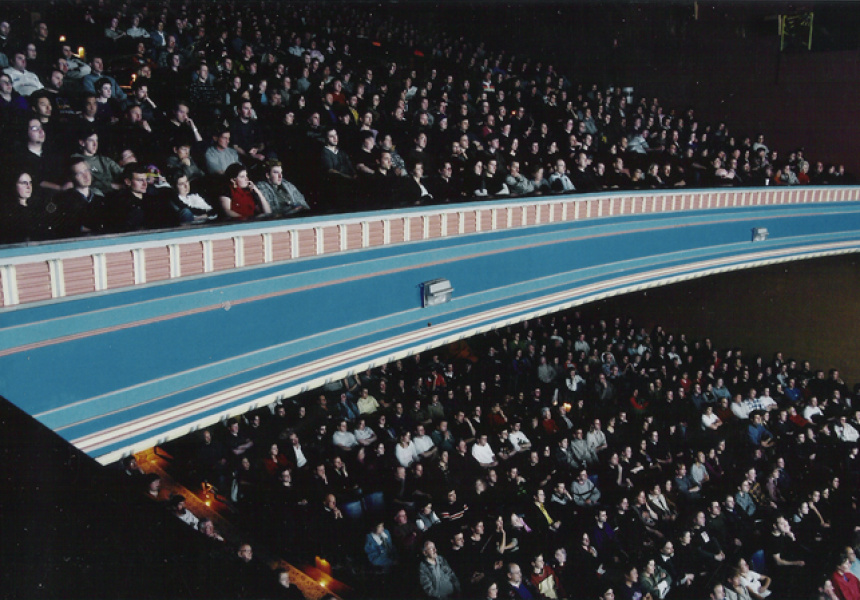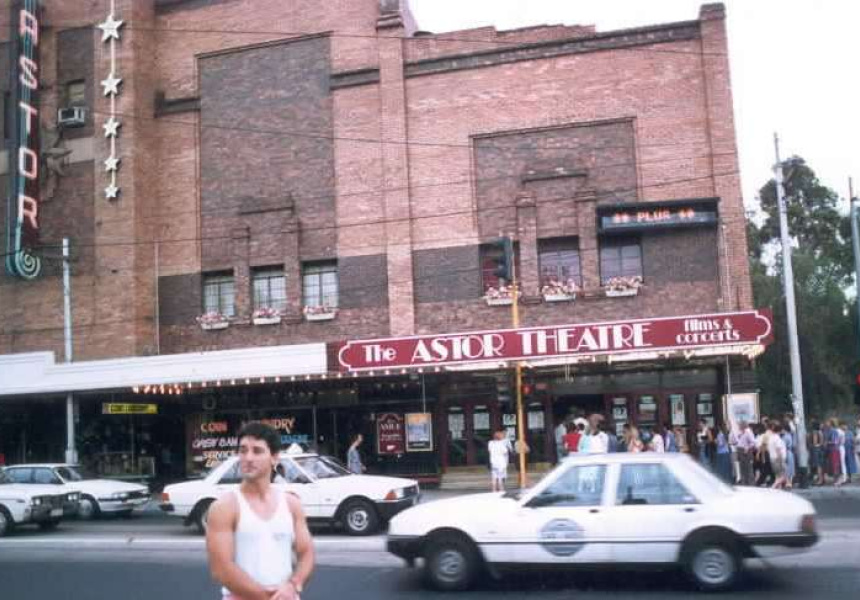George Florence can still remember sneaking off to explore the musty space behind the screen at his uncle’s Greek cinema in Richmond. He recalls heaving an old piano (left behind from the theatre’s silent movie days) into its rightful place, before dusting it off and tinkering the keys to an imaginary projection on the long sealed off screen.
It was an attempt to restore some of the cinema’s dignity, says Florence, whose affection for the past led him to re-open The Astor Theatre against the rise of VHS in the early 80s. And while filmgoers have long since fallen in love with the grand art-deco theatre, Florence is again battling the relentless passage of time. The Astor’s lease, which expires in 2015, hasn’t been renewed by owners St. Michael's School and they’ve made no promises to keep The Astor running as a cinema.
In a deluge of support that has seen Friends of the Astor tirelessly campaigning – and over 12,000 people sign a petition – to keep the Astor alive, Florence took a breather to reflect on his relationship with one of Australia’s last single screen cinemas.
We think you might like Access. For $12 a month, join our membership program to stay in the know.
SIGN UPYou worked in your uncle’s Greek theatre from a young age, before taking over The Astor when you were barely an adult. Tell us about your relationship with cinema.
One of my first memories of movie theatres was my uncle [Stan Raft, who owned a chain of Greek movie theatres around Melbourne] taking me into one of the projection rooms, and I was instantly in love with the whole romantic notion of that beam of light bringing moving pictures onto the screen, and the seemingly mind-boggling machinery in the projection room that magically made it all happen.
When it became dark outside and the theatre lights were on and the auditorium and foyers were full of jostling, shouting Greeks, it became a different place to the quiet, stark edifice it was during the cleaning hours. The coloured lights and the whole atmosphere of the people filled theatre was truly an amazing transformation to me. The anticipation of the movie starting was palpable. Working in the candy bars was also a memorable experience, and once you’ve had 1000 Greeks all screaming their orders for ice creams, nuts or drinks at you at once, you are truly initiated in the ways of working in a candy bar, especially a Greek one. My aunty paid us kids $2 each, plus a free movie ticket and bottle of lemonade.
And later?
The Astor closed as a Greek movie theatre in early 1982. I had never worked or been there. My dad mentioned one night that, “the Astor has closed – you've always wanted to run a movie theatre, why don't you go have a look at it”.
[I was] instantly was taken aback by the original, but faded, art deco grandeur of the Astor… There were only give light globes working in the whole theatre, there was one phone in the ticket box and everything was basically original as it had been for decades before, including the original tiny screen…
Everyone thought I was crazy, and I probably was, starting up a single screen, 1400 sear movie theatre when everyone else was abandoning them for multiplexes. But I believed in what I saw as an opportunity to preserve the traditional movie going experience. And I stuck with it, with dogged determination.
The Astor’s iconic quarterly calendar is very much part of its character. When did the tradition start? Who sets the agenda?
I have always produced a printed calendar. The first ones, in 1982, were A4 size and were put together on my kitchen table weekly, cutting and pasting images from movie magazines and distributor's press sheets to make up the artwork. Then we moved to more professional large-sized calendars and eventually full glossy coloured calendars, as you might know them today.
I do the programming with valuable input of my assistant Tara, who researches the new films and our friend Andy in New York with tips of movies he has seen and aren’t released here yet. Programming and calendar production is about a six-week cycle and they seem to come around mighty fast! Printing and distributing is very expensive – we post out to about 20,000 each time and print 50,000 calendars, which all end up on fridges and toilet doors around the world. We have probably screened around 20,000 movies since I started The Astor.
How would you describe the role The Astor has played in Melbourne’s history and particularly, its film culture?
Currently we know that our patrons consider the Astor a living treasure, where movies – especially the classics – can be experienced properly in their intended environment: on a big screen, with great sound, together with the energy emanating from the audience. We know of many movie industry directors, cinematographers, art directors, special effects directors who first gained their inspiration from watching classic movies at The Astor.
You have rare prints in your personal collection. Would we see them again if The Astor closed? Which is your most prized film?
Yes, I formed a company, Chapel Distribution, to round up and protect film prints from destruction. The typical scenario is once a film reaches the end of its commercial life and they take up space on an expensive shelf. If there is no revenue coming in from it, the distributors usually throw it to the tip. This has been the fate of many thousands of classic movie prints. Some are still with the major distributors but our company holds the largest collection of classic film prints in Australia.
This is the source of most of the classic movies screened at The Astor. Many prints are original and rare Technicolor prints, many more are new prints we paid to have made, and some are priceless, like our 70mm 6-track magnetic sound print of 2001: A Space Odyssey which is both my favourite film of all time and our most prized film print. If the Astor closed most of these would never be seen again in a movie theatre.
The first film you ever programmed as proprietor was King Kong. If you had to, what would you choose as The Astor’s final film?
2001: A Space Odyssey would be fitting, not that I foresee that there will be a final film.
Protect the Astor will be launched on Saturday June 16 at The Astor Theatre, 1 Chapel Street St Kilda, as an opportunity for people to show their support for the campaign. The free screening of The Labyrinth, popcorn and celebrity guest appearances kick off at noon. Check the Astor website for details. Sign the Save The Astor petition here


